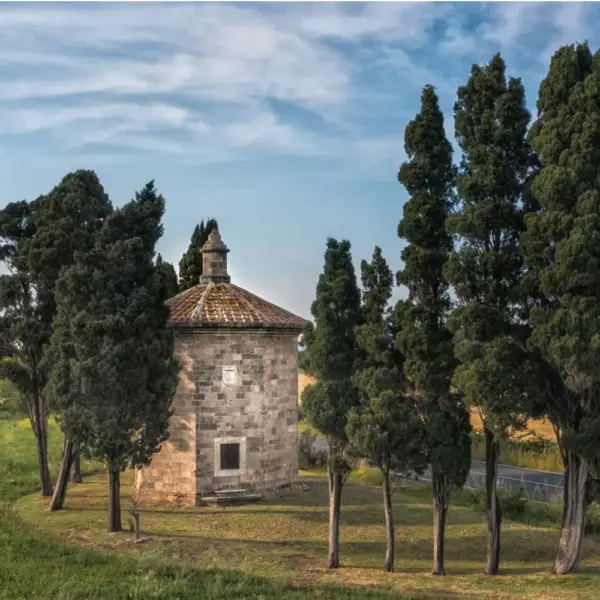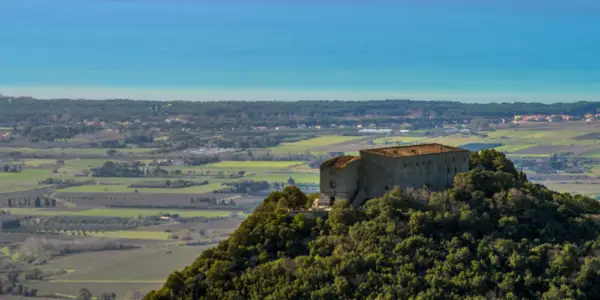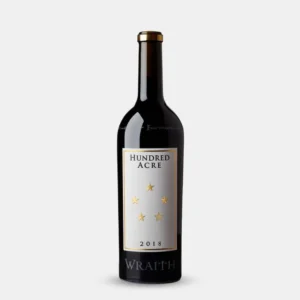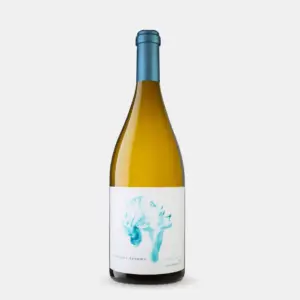Guidalberto marks the new millennium: the 2000 vintage appears on the market with less pretense than Sassicaia and with a more approachable drinkability, while showing a great aging potential. It is not intended to follow in the footsteps of Sassicaia, but rather be a wine that shows another expression of the Tenuta San Guido territory.
Guidalberto, the second wine of Sassicaia, a blend of 60% Cabernet Sauvignon and 40% Merlot. The palate is supple and refined with sweet, ripe dark fruits and smooth tannins. This is a beautifully balanced wine with elegance and richness. Vibrant dark fruit with notes of violets, and a mineral freshness on the finish.
The Label
The label depicts the Oratory of San Guido and the wine is named after the family ancestor Guidalberto della Gherardesca, an agricultural pioneer in the Bolgheri area. It was in the first decades of the 1800’s when he built the first factories, and churches. He also planned the avenue of cypress trees, the Viale dei Cipressi. These trees were initially used to mark the boundaries between the different crops. Its ornamental value, with the tall cypresses running in double rows, came after that.
Soil Type
The vineyards sit on varied, complex terrain with limestone, marl, pebbles, and clay. The altitude ranges between 100 and 300 meters above sea level, with south/south-west exposure.
Weather Trends
After a mild autumn with frequent rainfall, the winter remained fairly dry, with temperatures often above the seasonal average. Spring arrived early, and from mid-March, sunny days and rising temperatures accelerated bud growth. However, in April, the weather shifted again, with a significant drop in temperatures and renewed rain. The entire month of April remained rainy, stabilizing the soil’s water reserves.
Spring continued unusually with cold temperatures, sporadic rain, and winds from the north. By the end of May, the weather improved, and June welcomed summer with sunny days, normal temperatures, and good night ventilation. Late June saw intense heat, but it was brief, and the rest of summer brought temperatures within the seasonal average. July and August were hot, but still within normal ranges, except for the last week of July, which experienced muggy heat for about a week. After mid-August, some rain cooled the air, restoring the plants’ vitality.
Harvest
The harvest, strictly by hand, began with the Merlot in early September and continued with the Cabernet Sauvignon, to be completed in early October.
Fermentation
During hand-picking, workers sort the grape bunches in the field and then again on a sorting table in the cellar. They apply soft pressing and destemming to avoid excess pressure on the berries and prevent too much tannin release. Alcoholic fermentation occurs in stainless steel vats at a controlled temperature of 26-28°C, without external yeast.
Maceration lasts 13-15 days for Merlot and 15-18 days for Cabernet Sauvignon. Frequent pumping-over ensures balanced musts, enhances aromatic extraction, and softens tannins. Malolactic fermentation begins in early November, also in steel vats, before transferring the must to barriques for aging.
Aging
Once malolactic fermentation was complete, the wine was placed in French oak barriques, and a small part in American oak, where it was aged for a period between the 20 and 25 months. The duration of the ageing is technically decided on the basis of the seasonal trend of the vintage.
For more information on the Tenuta San Guido wines click here or visit their website here.







Reviews
There are no reviews yet.